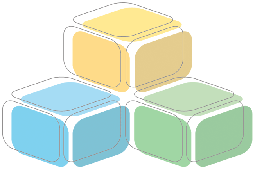


 .
.

|

|

 . .
|
|
| Tomoko Koda | |
|
Researcher
CREST Universal Design of Digital Cities Japan Science and Technology Agency koda _at_ digitalcity _dot_ jst _dot_ go _dot_ jp |
| Research in the Digital City Project | |
| 1. |
Universal Mobile Interface This research aims to develop a universal interface to connect heterogeneous digital city systems that uses various media, such as 2D map, image-based city spaces, 3D model of a real city, and so on. |
| 2. |
Effects of using emotionally expressive characters for Intercultural Collaboration The objective of this research is to measure the effects of using expressive characters as a user’s avatar to make up the emotional content that is lost via machine translation. |
3. |
Universal Character The purpose of this research is to study whether character representations and facial expressions are interpreted equally across different cultures. To participate in an open web experiment, click here. |
| Biography | |
|
Tomoko Koda received the B.A. degree from School of Human Sciences at Osaka University, Osaka, Japan, and the M.S. degree from Media Laboratory at Massachusetts Institute of Technology, USA, in 1996. She joined JST/CREST Digital City Project as a researcher in April, 2003. |
| Recent Publications | |
| 1. | Tomoko Koda, User Reactions to Anthropomorphized Interfaces, IEICE Transactions on Information and Systems, Vol.E86-D, NO.8, pp1369-1377, 2003. (pdf 300k) |
| 2. | Tomoko Koda, Satoshi Nakawaza and Toru Ishida. Talking Digital Cities: Connecting Heterogeneous Digital Cities via the Universal Mobile Interface. Peter van den Besselaar and Satoshi Koizumi Eds. Digital Cities III, Information Technologies for Social Capital: a Cross-Cultural Perspective, Lecture Notes in Computer Science, State-of-the-Art Survey, 3081, pp.228-241, 2005 |
| 3. | Tomoko Koda. Interpretation of Expressive Characters in an Intercultural Communication, 8th International Conference on Knowledge-Based Intelligent Information & Engineering Systems (KES2004), Lecture Notes in Artificial Intelligence, 3214, PartII, pp.862-868, 2004. (pdf 169k) |